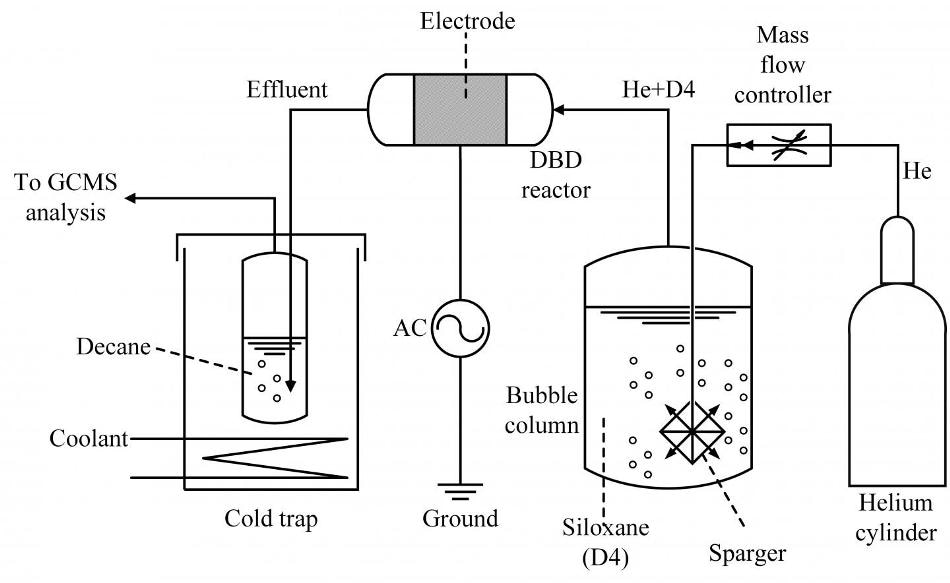Nov 7 2018
Landfills release methane gas that has traditionally been the subject of intense interest for alternative energy. However, one major problem is that in landfill gases, various contaminants like volatile methyl siloxanes are present whose silica deposits add additional wear and tear to the natural gas generators whenever they combust.
 Schematic of the experimental setup of siloxane removal from a carrier gas by application of dielectric barrier discharge plasma (Image credit: Malik M Tahiyat)
Schematic of the experimental setup of siloxane removal from a carrier gas by application of dielectric barrier discharge plasma (Image credit: Malik M Tahiyat)
One team has shown a potential new application of plasma technology that has the ability to remove such compounds.
At the University of South Carolina in Columbia, a research team has shown an experimental plasma device that has the potential to clean D4 gas samples; D4 is one of the most common siloxanes. Building upon a method for producing plasma known as dielectric barrier discharge, the researchers used a helium-based plasma to treat the D4 samples and considerably reduced their amounts.
This discovery points to an innovative promising solution for accommodating siloxane-rich landfill gas. The results of the study will be presented at the American Physical Society 71st Annual Gaseous Electronics Conference and 60th Annual meeting of the APS Division of Plasma Physics, which is being held at the Oregon Convention Center in Portland from November 5th to 9th, 2018.
This is the first time dielectric barrier discharge has been used to remove volatile organic silicate compound. In our case, there’s no wait for removing it or material that has to be thrown out after a certain amount of time.
Malik Tahiyat, Researcher, University of South Carolina.
Silicates have a tendency to erode the engines that drive the production of natural gas electricity, and hence need an additional costly maintenance. Most of the present techniques of removing silicates from cleaner burning methane, for example, silica gel and carbon filters, experience reduced performance and can be expensive to use again.
Therefore, the researchers produced a dielectric barrier discharge plasma to make D4 inert by polymerizing it out of the gas phase. They then allowed the helium gas to bubble via liquid siloxane, which is subsequently passed via a tubular dielectric barrier discharge plasma reactor.
Samples treated with electric discharges were compared against samples that were not. To assess the identity and quantity of the products from the plasma reactions, nuclear magnetic resonance and gas chromatography-mass spectrometry were employed.
Based on how long the helium with D4 was subjected to the plasma, about 85% of the D4 was transformed to removable deposits of silica compounds, proving that the silicon was fully removed from the gas mixture.
Our findings have shown that plasma can remove siloxane successfully. When it is removed, it comes out in a form that wouldn’t re-enter the waste supply, something that’s a problem with the other approaches.
Shamia Hoque, Researcher, University of South Carolina.
According to Tanvir Farouk, a third researcher involved with the study, the researchers hope to enhance the lab-based system and believe that they would scale it up to a commercially viable product in the near future.